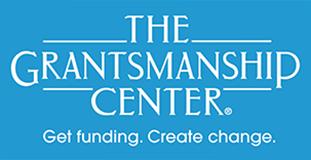
This is a preview from our latest Grant Management series article, Model Purchasing Policies and Procedures: A Guide for Nonprofits, Governments, and Tribal Organizations, available for purchase here.
Preface
I. Introduction
Welcome to Model Purchasing Policies and Procedures: A Guide for Nonprofits, Governments, and Tribal Organizations. It has been more than 30 years since any organization has issued something substantially new concerning procurement for use by governments and nonprofit organizations. The question is why now? There are four reasons.
First, the Office of Management and Budget’s (OMB) uniform guidance on grant administration (popularly known as the Super Circular) implemented January 2015 introduced major changes in procurement requirements for nonprofit organizations.
Second, the procurement guidance documents produced by the American Bar Association’s Model Code Project are showing their age. The Model Procurement Code for State and Local Governments was last revised in the year 2000 and is now 15 years old. Its predecessor is 35 years old. The Model Procurement Ordinance for Local Governments is more than 30 years old and the Recommended Regulations to the Model Procurement Code have not been revised since first issued in 1980.
Third, legal drafting techniques have changed substantially since the late 1970’s and 1980’s. The Plain Legal Language and Plain Writing movements are transforming the way laws, regulations, and policies are written.
Given these circumstances, the time is ripe for something that is fresh and up-to-date; something that non-legal managers and procurement personnel can use with confident understanding.
II. Addressing Current Needs
The new Model Purchasing Policies and Procedures: A Guide for Nonprofits, Governments, and Tribal Organizations addresses current needs in several ways:
• It’s practical, designed not only to guide you on what you need to do, but also on how to do it.
• While honoring legal necessities, the language is less formal and reflects current Plain Legal Language drafting techniques.
• The summary table of contents is re-enforced by a content table for each chapter to guide you smoothly through the material.
• There are numerous cross-references to the procurement provisions of the Super Circular, as well as references to other resources to help you find what is essential.
Every organization should have procurement policies and procedures that reflect state of the art best practices regardless of the sources of funds used for purchasing. This guide can help your organization accomplish that.
Although this guide is comprehensive, there are some important limitations you should take into account. First, there are thousands of federal, state, local, and foundation grant programs that users of this guide might encounter. We cannot possibly cover every procurement particularity that might arise from these multiple funding sources. Your organization must be alert to the specific procurement requirements it encounters that differ with or that are not within the scope of this guide.
Second, although the procedural text in this guide touches on intended actions or outcomes, the language must not be viewed as chapter and verse procedural guidance. Again, this guide cannot possibly address the unique operations within every organization.
This guide provides a wealth of foundational material to work from. Your task is to study it, take your organization’s particular situation into account, and adapt the material to reflect your organization’s specific needs and circumstances.
III. Drafting the Policies and Procedures Guide
Although Model Purchasing Policies and Procedures: A Guide for Nonprofits, Governments, and Tribal Organizations is being issued partially in response to a significant federal grant reform initiative—the largest since the old OMB Circulars were first issued 40 years ago––this publication is clearly more than that. It reflects standard best practices regardless of funding source.
This publication arises out of my own 40 years of experience with procurement as a grant administrator, an instructor, and a frequent contributor to professional journals. It also reflects my learning from other kindred professionals in the field of contracts and grants.
In developing this guide, I consulted the various model codes previously mentioned, examined the Federal Acquisition Regulation (FAR), looked at practical guides issued by the U.S. Department of Housing and Urban Development (HUD), the U.S. Environmental Protection Agency (EPA), the U.S. Economic Development Administration (EDA), the Rural Development Administration (RDA) within the U.S. Department of Agriculture, and other sources.
Some comments about the drafting of the model documents are in order. Procurement documents are far from easy reading—especially by non-lawyers. Arcane language and poor drafting explain the difficulty. Fortunately, legal drafting has improved due in no small measure to the Plain Legal Language movement and the Federal Plain Language Act.
There is an art and a craft to legal drafting. My own training began nearly 40 years ago. It started with the legal drafting team of the Delaware State Legislature, continued through graduate school, and expanded with the many opportunities I have had to draft hundreds of laws, regulations, and policy documents for the federal government, municipalities, nonprofit organizations, and Native American tribal governments.
In drafting these model documents I have drawn from the wisdom of many expert legal drafters of statutes and regulations and have used the advice of the Plain Legal Language and Plain Writing movements where possible. My hope is that these model policies and procedures measure up as clear, concise, and readable.
A special note of thanks is due to Barbara and Larry Floersch, editors who did much to make a good product great. A good word of thanks is also due to the production staff at The Grantsmanship Center in Los Angeles whose skill with electronic publishing brought the text into being.
Model Purchasing Policies and Procedures: A Guide for Nonprofits, Governments, and Tribal Organizations is a comprehensive, practical, and current policy guide that also offers procedural guidance.
• Nonprofit organizations can adapt the procurement policies to the unique circumstances of their organizations.
• Governmental organizations can adapt the procurement provisions as needed, and then adopt them as policies or statutory acts.
• All audiences can rely on the guide as sure-footed advice for making purchases with direct and pass-through federal grant funding.
• All audiences can benefit from cogent commentary advice and other resources located throughout the text.
We at The Grantsmanship Center hope you’ll enjoy using this reference on procurement management. Meanwhile, if you need further assistance, we are only a call, click, or email away.
— Henry Flood, Senior Advisor for Grant Administration



